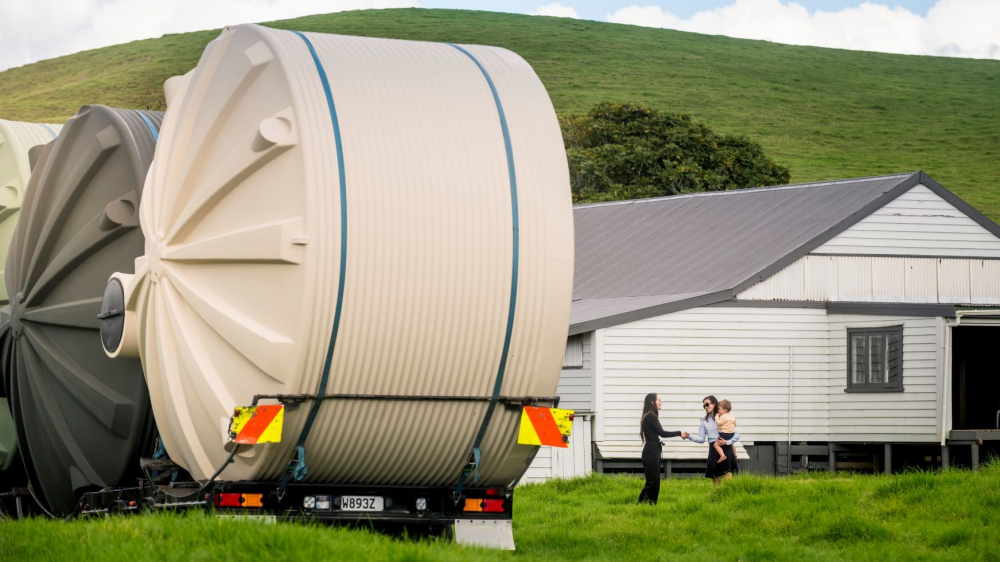Friday, 1 August 2025 Knowledge Articles
Buying the Right Water Tank
We Have The Best Tanks, But Which One Is Best For YOU?
If you're keen to invest in a water storage tank, we'll have just the right thing. But what does "just the right thing" look like? There is a lot to consider when investing in liquid management and the first stages of the buying process can seem daunting, but we'll make it easy. That includes expert advice from our team and handy guides (like this one) to help you settle on the perfect Promax tank.
Size
We firmly believe bigger is better. No one has ever complained to us about having too much tank capacity, and we know you'll always find ways to use that precious water. For one thing, droughts are becoming very common - those once in fifty-year droughts seem to be happening every few years now, don't they? Being able to irrigate your property at the height of summer and during council water restrictions will keep your garden alive, so maximising tank volume is a sensible response to extended dry spells.
Budget
Budget will be a factor, but that doesn't necessarily mean you should buy a smaller tank just because it's cheaper. For example, there's a small price differential between a 25,000-litre Promax tank and a 30,000-litre Promax tank, but that extra water is priceless. It is better to pay a little more to give you enough capacity in one tank rather than buying and installing a second tank when you realise you need more storage. And don't forget our highly affordable XPRESS water tanks. They don't share the same features as our premium ENDURO corrugated tanks, but they are available in the same sizes.
Location
The more space you have, the bigger the tank you can buy. Plus, it gives you a wider range of options on where to place your tank. But, even if you don't have acres of land, that doesn't mean you have to miss out on the benefits a Promax water storage tank will give you. New Zealand residential sections are shrinking, with large blocks subdivided into smaller ones, but our rectangular slimline tanks can slot into these tighter spaces. Just be sure that you don't place the tank so that it impedes easy access around your house.
Material
Naturally, we believe plastic is the best material, but we understand you have a choice. Concrete is one of your options. We acknowledge you can bury concrete tanks for aesthetic reasons, and they keep water cool because of concrete's high insulation value. However, on the downside, concrete tanks are heavy and difficult to install. In addition, it isn't easy to retrofit new outlets to concrete tanks, plus as rigid structures, they lack flexibility and are prone to earthquake damage.
On the other hand, Promax plastic tanks are more flexible and can withstand earthquakes, while their light weight makes them easy to move into position and install. It is relatively straightforward to retrofit outlets on plastic tanks too. From a budget point of view, Promax tanks are generally cheaper to buy and install than their concrete counterparts. You can read more about the respective merits of plastic water storage tanks and their concrete counterparts here.
Repairs and Maintenance
Not surprisingly, as water tanks have been common in New Zealand for many years, there is a whole industry devoted to repairing, maintaining, and cleaning them. It is worth noting that polyethylene tanks can easily be welded, patched and repaired if required.
When it comes to cleaning your tank, we recommend you use a professional tank cleaning company to do this. A professional tank cleaning company can vacuum the base of your tank without emptying the water. Alternatively, you could consider installing a Tank Vac. These will remove build-up of sediment already present and help keep your tank clean all the time.
You’ll also need to keep in mind that concrete tanks should be given a cement wash every few years to counteract the leaching of lime into the water and If you choose a plastic water tank, then you will need to test the acidity of your water and plan how you will raise the ph of the water if it is too acidic.
Council Consent
Our team is familiar with the processes surrounding consents, and wherever possible, we'll assist you based on our knowledge of these requirements. Only the council in your region can tell you whether you need building or resource consent to install a water tank. So, while we welcome your questions and will give you as much guidance as possible, the council will make the final decision on whether you need consent. Read more about this here.
Other Considerations
When you put in a new tank you should think about how you will keep the water clean. Contaminants on your roof will be flushed into the tank, you should aim to minimise this by diverting the first flush of water away from your tank. There are many products that do this, or you can create your own.
These are a few pieces to the tank buying puzzle. But Promax will make it an easy one to solve! Contact us for further information and advice to help you make the right decision.

